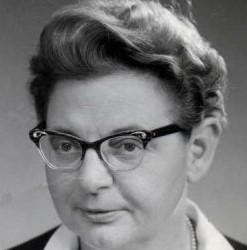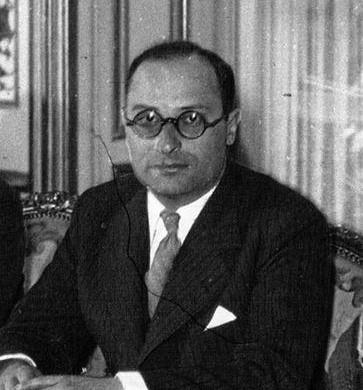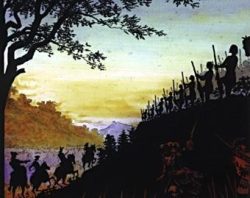Samuel Bastide (1879-1962)
A painter and orator dedicated to keeping alive the history of Protestantism at the time of the Désert.
A whole life devoted to converting people by painting
Samuel Bastide was born in 1879, in Saint-Jean-du-Gard. In spite of his good school results, he left school at the age of 11 and began learning copper etching techniques ; somewhat later he opened a photo-enlargement studio, and began theological studies in Geneva but did not complete them.
At 18 he signed up with the Croix Bleue (an association struggling against alcoholism) and was to work all his life for this humanitarian cause. It was for the Croix Bleue that in 1908 he organized his first lantern slide show of La chèvre de Monsieur Seguin by Alphonse Daudet. During the First World War he was responsible for a soldiers’ club and greatly increased the number of his slide shows.
After the war he ran civilian hostels and then became an itinerant speaker for the Central Evangelical Society. He organized a slide show lending service for churches that wished to use them.
In 1938 he began working for the Ligue Nationale antialcoolique ;he improved his methods of editing slide shows for new audiences : schools, teachers’ training colleges, and army barracks.
Back in Saint-Jean-du-Gard he visited parishes and schools with his projections until the age of 77.
He died in Lausanne in 1962.
He leaves an original series of several thousand painted glass plates that can be projected on a screen.
Bastide’s meticulous drawings are very detailed ; he printed a reduced photo of each drawing on a glass plate measuring 8×8 cm, then hand-painted it and projected it by means of a folding, portable lantern of his own invention, with a double focus .
In this way, he created over 2500 slides making up 35 montages separated into four different categories : the short series, generally profane (fables, tales by Daudet) which he would project either as the first part of a show, or to non-religious audiences. The longer montages, lasting about an hour, were divided in three themes : educational series (against alcoholism), biblical series (mostly illustrations of the New Testament), and thirdly the bulk of his work : a series on the history of Protestantism. In his historical montages he highlights heroic men and women ; he singles out the constancy of their faith and the way they resisted to persecutions aimed at breaking down their integrity.
His work constitutes a unique memorial of the history of Protestantism. It can be viewed, together with all his apparatus and personal mementoes, at the Musée des Vallées Cévenoles.
Bibliography
- Books
- BASTIDE Samuel, Les pasteurs du Désert, Musée du Désert, 1901
- BASTIDE Samuel, L’Exode de Huguenots, Musée du Désert, 1901
- BASTIDE Samuel, Les Galériens pour la Foi, Musée du Désert, 1901
- BASTIDE Samuel, La Tour de Crest et ses martyrs, Musée du Désert, 1901
- BASTIDE Samuel, Les prisonnières de la Tour de Constance, Musée du Désert, 1901
- CABANEL Patrick et ENCREVE André , Dictionnaire biographique des protestants français, de 1787 à nos jours, Editions de Paris - Max Chaleil, Paris, 2015, Tome 1 : A-C
- CABANEL Patrick et JOUTARD Philippe, Les camisards et leur mémoire, 1702-2002, colloque du Pont-de-Montvert (25 et 26 juillet 2002), Presses du Languedoc, Montpellier, 2002, p. 278
- JOUTARD Philippe, Les camisards, Gallimard, collection Folio Histoire, Paris, 1994
Associated notes
-

Madeleine Barot (1909-1995)
A woman passionately engrossed in helping her fellow human beings and spreading Protestantism. -

Charles Gide (1847-1932)
Charles Gide was a theorist of social economy and a leading figure in the French economic cooperative movement and Christian socialism. A spirit of solidarity pervades all his work. -

Jean Zay (1904-1944)
A brilliant politician, Jean Zay was a witness and victim of 20th century tragedies. -

Charles Munch (1891-1968)
Charles Munch was a great French conductor. -

André Gide (1869-1951)
André Gide was one of the most well-known writers of the first half of the XXth century. He was born into a protestant family and was brought up in an...

